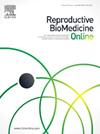Is planned oocyte cryopreservation delivering?
IF 3.7
2区 医学
Q1 OBSTETRICS & GYNECOLOGY
引用次数: 0
Abstract
The objective of this review is to determine whether planned oocyte cryopreservation is successfully providing women with reproductive autonomy and the opportunity to shape their families. Planned oocyte cryopreservation is an established means to expand the reproductive function of oocytes and is not associated with an increased risk of congenital anomalies or short-term health risks to the offspring. There is sufficient clinical evidence to support the success of planned oocyte cryopreservation; however, this technology does not guarantee live birth, and outcomes greatly depend on both the age at cryopreservation and the total number of cryopreserved oocytes. While reproducibility between centres must be improved, the results from the authors two large, experienced centres are consistent and provide useful data for patient counselling. Planned oocyte cryopreservation provides the highest cumulative live birth rates (>75%) when it is performed below the age of 35 years and 15–20 or more mature oocytes are cryopreserved. Live birth rates from planned oocyte cryopreservation at an ideal age are higher than live birth rates from women who delay childbearing past their reproductive prime and then attempt natural conception followed by IVF if they are unsuccessful.
计划的卵母细胞冷冻保存是否有效?
本综述的目的是确定计划的卵母细胞冷冻保存是否成功地为妇女提供生殖自主权和塑造家庭的机会。有计划的卵母细胞冷冻保存是扩大卵母细胞生殖功能的一种既定手段,与先天性异常风险增加或后代短期健康风险无关。有足够的临床证据支持计划卵母细胞冷冻保存的成功;然而,这项技术并不能保证活产,其结果在很大程度上取决于冷冻保存的年龄和冷冻保存的卵母细胞总数。虽然中心之间的可重复性必须改进,但作者的两个大型、有经验的中心的结果是一致的,并为患者咨询提供了有用的数据。计划卵母细胞冷冻保存在35岁以下,冷冻保存15-20个或更多成熟卵母细胞时,可提供最高的累计活产率(75%)。在理想年龄进行计划卵母细胞冷冻保存的活产率高于生育年龄后推迟生育,然后尝试自然受孕,如果失败再进行体外受精的妇女的活产率。
本文章由计算机程序翻译,如有差异,请以英文原文为准。
求助全文
约1分钟内获得全文
求助全文
来源期刊

Reproductive biomedicine online
医学-妇产科学
CiteScore
7.20
自引率
7.50%
发文量
391
审稿时长
50 days
期刊介绍:
Reproductive BioMedicine Online covers the formation, growth and differentiation of the human embryo. It is intended to bring to public attention new research on biological and clinical research on human reproduction and the human embryo including relevant studies on animals. It is published by a group of scientists and clinicians working in these fields of study. Its audience comprises researchers, clinicians, practitioners, academics and patients.
Context:
The period of human embryonic growth covered is between the formation of the primordial germ cells in the fetus until mid-pregnancy. High quality research on lower animals is included if it helps to clarify the human situation. Studies progressing to birth and later are published if they have a direct bearing on events in the earlier stages of pregnancy.
 求助内容:
求助内容: 应助结果提醒方式:
应助结果提醒方式:


